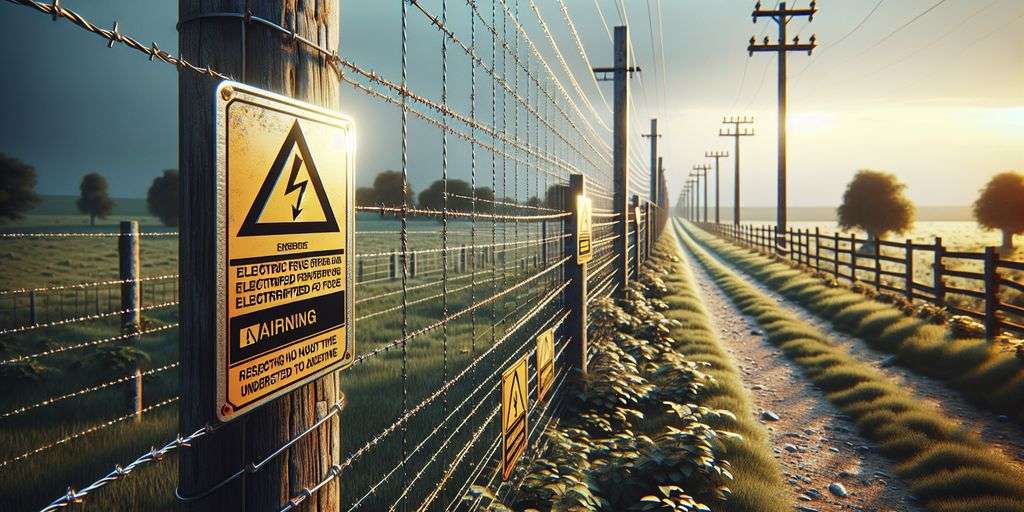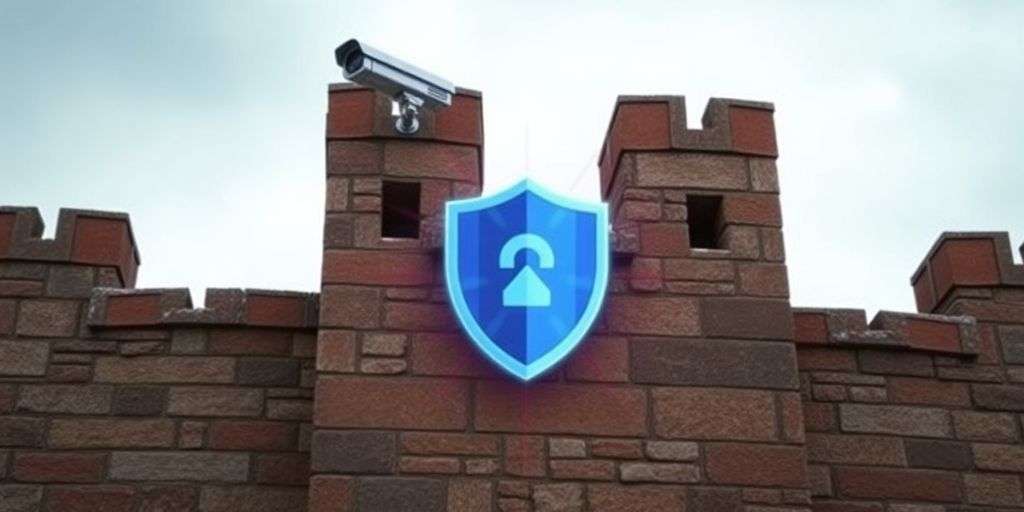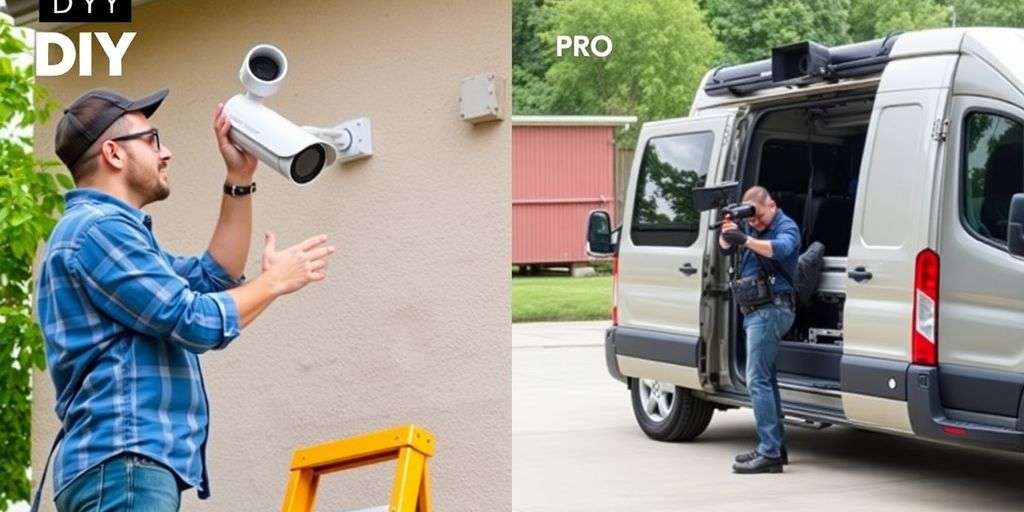Electric fences are a popular choice for enhancing property security, offering a deterrent against trespassers and unwanted animals. However, these systems come with their own set of challenges and considerations. This article delves into the various drawbacks of using electric fences, including safety concerns, financial implications, maintenance requirements, and their overall effectiveness in security enhancement.
Key Takeaways
- Electric fences pose significant safety risks if not properly installed and maintained, necessitating professional expertise and regular inspections.
- The initial cost of installing electric fences is considerably higher than traditional fencing, which might be prohibitive for some homeowners or businesses.
- While electric fences can effectively enhance security, they require ongoing maintenance and compliance with legal regulations to ensure safe operation.
Safety Concerns and Legal Compliance
Potential Dangers of Electric Fences
Electric fences, while effective, pose certain risks that you must be aware of. Accidental shocks can occur, especially if the fence is improperly installed or if it malfunctions. This can be particularly hazardous to children and pets. Moreover, the psychological impact of electric shocks on animals should not be underestimated, as it can lead to stress and behavioural changes.
Legal Regulations and Compliance
It’s crucial that you comply with local regulations when installing electric fences. Different regions have varying laws regarding the use of electric fences, and non-compliance can lead to hefty fines or legal challenges. Ensure you understand the legal requirements in your area before proceeding.
Importance of Professional Installation
To mitigate the risks associated with electric fences and ensure compliance with legal standards, professional installation is highly recommended. A qualified installer will not only ensure that the fence meets all safety codes but also optimise its effectiveness and durability. Remember, cutting corners on installation can cost you more in the long run, both financially and in terms of safety.
Financial Implications of Electric Fencing
High Initial Investment
Investing in an electric fence requires a significant upfront cost. This includes the purchase of materials, payment for professional installation, and any initial setup fees. It’s crucial to prepare for these expenses to ensure that the investment aligns with your budget.
Cost Comparison with Traditional Fencing
When considering an electric fence, it’s essential to compare its costs with those of traditional fencing options. Electric fences can be more expensive initially but may offer savings in terms of maintenance and effectiveness against trespassing. Here’s a quick comparison:
| Type of Fencing | Initial Cost | Maintenance Cost |
|---|---|---|
| Electric Fence | High | Low |
| Traditional Fence | Moderate | Moderate |
Long-term Financial Benefits and Drawbacks
While the initial cost is high, electric fences can provide long-term savings on maintenance and security. However, you must also consider the ongoing costs, such as electricity or solar power options, which add to the total expense. By conducting a thorough cost analysis, you can determine if the long-term benefits outweigh these costs.
Maintenance and Troubleshooting
Maintaining your electric fence is crucial to ensure it continues to function effectively and safely. Regular checks and prompt repairs are essential components of a robust maintenance routine.
Routine Inspections
Conduct regular inspections to catch potential issues before they escalate. Check for broken wires, weak battery signals, and vegetation that may interfere with the fence’s operation. It’s advisable to schedule these inspections at least once every three months to ensure optimal performance.
Identifying and Addressing Faults
When a fault occurs, identifying and addressing it swiftly is key. Look for signs of wear and tear or damage from environmental factors. If you’re unsure how to fix a problem, consult a professional. Keeping a log of all faults and repairs can help you track the fence’s performance and identify recurring issues.
Ensuring Continuous Operation
To ensure continuous operation, it’s important to have a backup power supply and to check the voltage levels regularly. This will help you avoid unexpected downtimes that could compromise your property’s security. Additionally, familiarise yourself with the system’s manual to troubleshoot minor issues quickly.
Enhancing Security with Electric Fences
Effectiveness Against Trespassers
Electric fences are a formidable barrier against trespassers, significantly reducing the likelihood of unauthorised access. The psychological deterrent of an electric shock is often enough to discourage potential intruders. However, for those who might still attempt to breach your perimeter, the physical barrier provides a robust second line of defence.
Integration with Other Security Measures
To maximise the effectiveness of your electric fence, consider integrating it with other security systems. Combining CCTV surveillance, alarm systems, and motion sensors can create a comprehensive security solution that monitors and protects your property around the clock.
Limitations and Considerations
While electric fences enhance security, they are not infallible. It’s crucial to be aware of their limitations and ensure they are part of a broader security strategy. Factors such as power outages and maintenance issues can impact their effectiveness. Regular inspections and prompt repairs are essential to maintain optimal performance.
Note: Always ensure that your electric fence complies with local safety regulations to avoid legal complications.
Conclusion
In summary, while electric fences provide enhanced security and can be an effective deterrent against intruders and unwanted animals, they are not without significant drawbacks. The potential risks to safety, the necessity for stringent compliance with legal standards, and the high initial costs must all be carefully considered. It is imperative that those opting for electric fencing prioritise safety, adhere to local regulations, and engage professionals for installation and maintenance. Ultimately, the decision to install an electric fence should be made after thorough consideration of both its benefits and its limitations.
Frequently Asked Questions
What are the safety risks associated with electric fences?
Electric fences can pose serious risks if not correctly installed and maintained, potentially causing injury or even death. It is crucial to have them installed by a professional and to conduct regular maintenance checks.
Are there legal requirements for installing electric fences?
Yes, electric fences must comply with local regulations and codes. It’s important to ensure that your fence meets these requirements and that adequate warning signs are posted to alert people to the presence of the electric fence.
What are the financial implications of choosing electric fencing over traditional fencing?
Electric fences typically require a higher initial investment compared to traditional fences. However, they may offer long-term benefits such as increased security and lower maintenance costs, which should be considered when making your decision.





